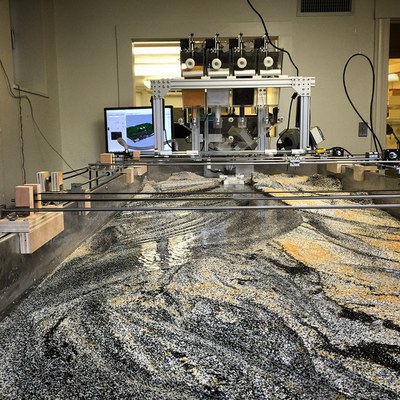
Approximately 40% of people across the globe are living within 100 kilometers of coastal and riverine environments. This means that three-quarters of the world’s mega-cities and critical infrastructure are situated next to the ocean and will be required to adapt to fluctuating sea levels over the next century. This adaptation will be a monumental task, requiring huge adjustments in the physical location of cities and the construction of new forms of barriers and mediations through levees, sea walls, and control structures. The research outlined in this lecture posits that the energy, embodied in the hydrological systems that build coastal lands, can be choreographed to mitigate the effects of sea level rise. The research focuses on sediment transport, the suspension and movement of sediment within the water column and how small modifications to the water system can be used to construct new land. This body of research also connects global sensing systems and models to the construction of coastal environments, particularly how real-time sensing can be used to choreograph the real-time construction of coastal landscapes.
Bradley Cantrell is Chair and Professor in Landscape Architecture at the University of Virginia School of Architecture.